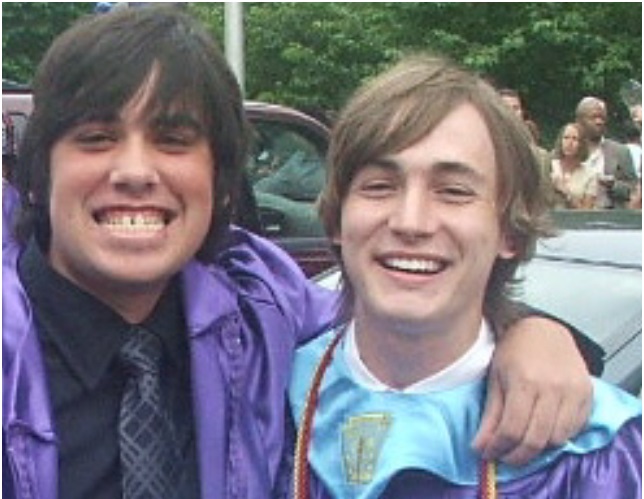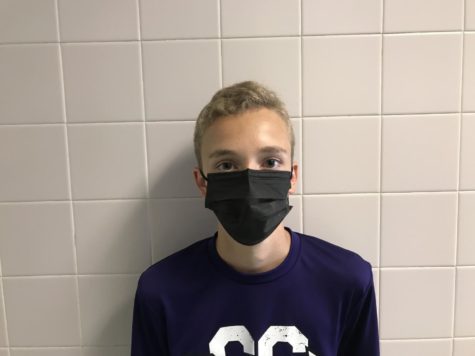Alumni teachers reflect on school changes
Used with permission of James Kotula.
Spanish teacher James Kotula (right) with Ricky Urdaneta (left) celebrate after graduation in 2007.
March 16, 2022
Originally a primary school containing seventh through 12th grades, CHS has taken on many changes since its founding in 1973. Over the years there have been many changes in the school, both physically and socially.
One of the most significant changes was the open layout of the school, which had no doors or walls before they were installed in 1994. According to the National Public Radio this school layout made it hard for teachers and students to concentrate on tasks.
“My freshman year, the school layout was physically different from the way it looks today,” health teacher Carmen Wise (‘94) said. “[The layout] was crazy, honestly. Focusing was difficult because you felt like you were learning in the hallways and you could hear voices everywhere, but, eventually, that 70’s style changed. By my sophomore year, construction started and finished to the way it looks now by my senior year.”
Over time, school scheduling and events have changed as well and have affected the amount of time students spend working during the school day and the amounts of activities they can participate in. CHS has doubled the number of clubs and activities offered to students, from having around 50 clubs and activities in 1994 to nearly having 100 this year and has changed the schedule to having four 90 minute class periods a day instead of the older schedule of having every class for 45 minutes one day a week.
“There have been many opportunity changes from when I was a student here and now involving schedules and school events that benefit students.” Spanish teacher James Kotula (‘07) said.
Students now have a Charger Time period available to make up work and tests.
“All retakes, remediation, club meetings and rehearsals had to be done before or after school, which took up even more time,” Kotula said. Also, students now have more opportunities such as more classes and clubs being available.”
Another major change is the use of technology that makes certain parts of attending high school a bit easier for students, with the ability to read emails from teachers almost instantly, turn in work faster with online assignments and the ability to connect with friends online.
“We didn’t have the support systems we have now,” Wise said. “We didn’t have social media, so we all had to pre-plan to go to school sporting events and meet up at places on time.”
Some teachers believe that it is more difficult to be a student currently, than prior students, with the current expectations of teachers and parents and the increasing hardship of getting accepted into Virginia colleges. For example, Virginia Tech’s 2022 acceptance rate of 67% which was 73% in 2015.
“I think that past students had their demands and high standards to be met, but had it easier,” Kotula said. “Current students have even more to balance. With the possibility and availability of instruction being accessible 24/7 the students are responsible for managing and devoting more time of the day to assignments instead of just handling school work at school and homework and long term assignments at home.”
Many alumni have had positive experiences as students which pushed them to return to the school as educators.
“I think that the community here was something that drove me to return,” English teacher Michael Murphy (‘88) said. “It is a very positive environment overall.”



